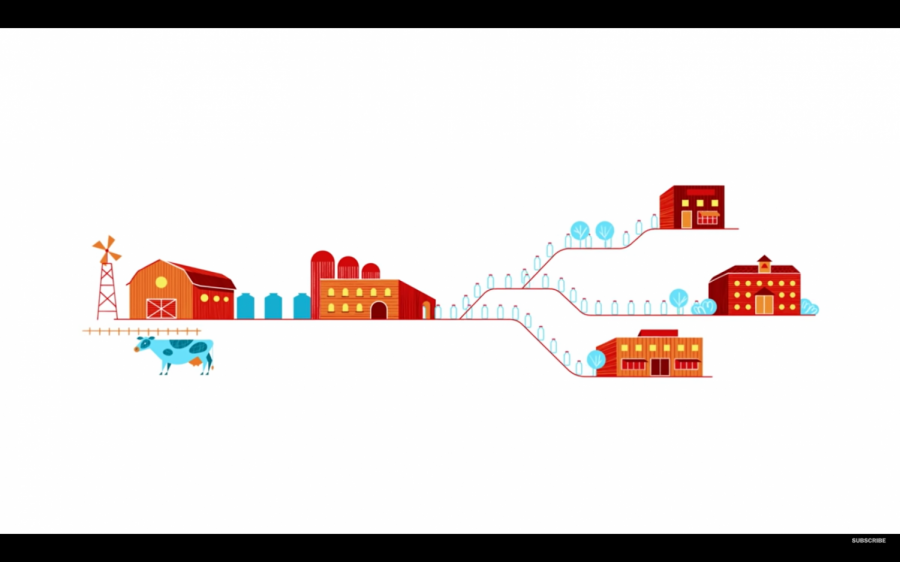Farmers Dump Produce And Dairy Due To Covid-19
In southern Florida, the cars stretch out for nearly two miles as thousands of people wait for hours to reach the local food bank. Across the country, this image can be seen in most cities and poses a serious issue. Food banks across the U.S. are seeing a massive spike due to the increase in unemployment as a result of the coronavirus.
But on American farms, the economic fallout looks very different. The farms have produced a widespread surplus that’s just going to waste. Millions of pounds of tomatoes, cucumbers, and squash are left to rot or to be plowed back into the fields. And dairy farmers are forced to dump millions of gallons of fresh milk down the drain.
It’s all because of a breakdown in the food supply chain. One that, for now, means that we have farmers with too much food and few distribution options.
To understand why the food supply chain is broken, let’s look at the distribution of milk. It starts with cows and the dairy farm where they are milked. That milk is filled into tanks and is then sent to processors. These processors then turn it into various dairy products like milk, cheese, yogurt, or butter. It’s then packaged and sent off to grocery stores where customers can buy them off the shelves.
Here’s the thing. Even though a large portion of dairy products are aimed at grocery stores, it’s just one of many places where the product ends up. Around half of all products are used for schools and businesses. Starbucks, for example, typically goes through around 180,000 gallons a day in their 8791 stores around the country according to Quora.
Together all of these places use a huge amount of milk produced in the U.S., which in 2019 was a total of 218 billion pounds according to the US Department of Agriculture.
Every step that goes into creating dairy products—from farming to processing and packaging—carries out a specialized process that makes the chain efficient under normal conditions. But as the coronavirus started to spread, and the nation began to shut down, schools and restaurants canceled orders, except the cows at the farm still needed to be milked.
Even though more people have been buying dairy products at grocery stores during the lockdown, the system isn’t built to redirect excess supply that easily. The same dairy products meant for schools, businesses, and grocery stores, look very different after they’re processed and packaged.
For example, at grade schools, the milk might take the shape of small milk cartons made for kids or massive bags of mozzarella cheese for pizzas. At a restaurant, the products might be large 5-gallon containers of milk or 40-pound blocks of cheese. At grocery stores, they have the products that we are more used to seeing, like single gallon cartons of milk and small packages of cheese. Converting those school milk cartons into something people will buy at grocery stores, would be a massive change.
Facilities don’t normally have the right packaging or machinery to compensate for the grocery dairy product. Supermarkets will also find difficulty storing the extra milk. Nobody could sell a forty-pound block of cheese to any family and buying the machines to cut them would cost millions of dollars that the processing companies cannot afford.
To combat this issue, some are sending their surplus produce to food banks, but these organizations often don’t have the fridge capacity or the distribution power to give away so much perishable product.
The milk prices lower and so does the quality of the milk. Already the trend of dairy-free milk and cheese products is taking a hold of the milk market which puts the industry at a disadvantage. Even with some stores and schools opening, the new consumer demand likely won’t make up for the huge losses that the coronavirus has caused on the dairy industry.

Harrison is a senior and is excited for his fourth year at the Harriton Banner. In addition to the Banner, Harrison also runs the Business Journal for...



